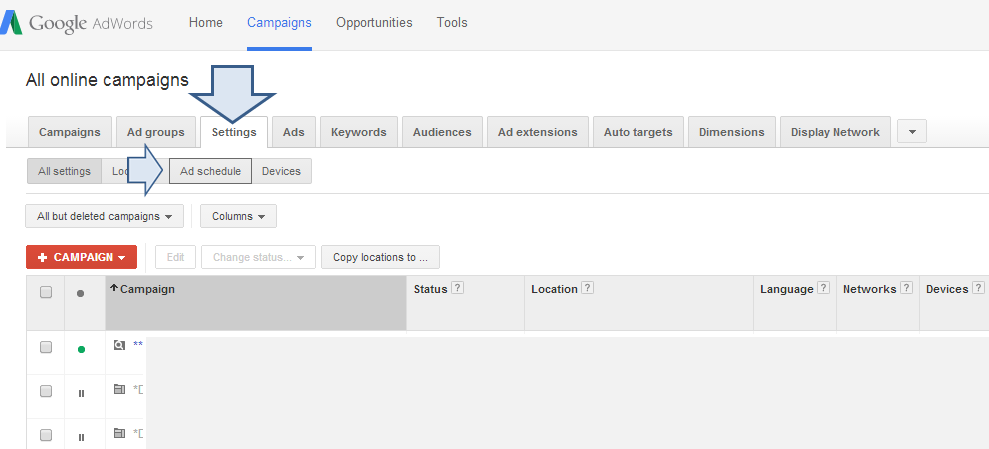How To Set Up Google Day Parting


Google’s custom Ad Scheduling allows online advertisers to change when ads show up. Day parting or changing what day (time,etc) ads appear is a Google ad feature which can significantly improve your ad performance on Google.
Ad scheduling (also known as “dayparting”) lets you tell Google exactly when you want your ads to run, and more importantly — when you do not want them to run. In addition, more advanced users can automatically modify their bids based on time-of-day and day-of-week cycles in campaign performance- Google
Should you set up ad scheduling for you Google Ads? Keep reading to find out when, how and why you should change your Google bids based on time of the day.
Adjusting when your ads appear on Google can significantly improve campaign performance. Ice cream trucks don’t drive around in December, and swim suits generally appear in stores during Spring. Your ads should appear during times when users are more likely to perform an action or convert.
When you use Day Parting or Google Ad Scheduling is going to vary depending on your site, your ROI goals, products, budget, and seasonality. Use your AdWords data to create Day parting changes, but continue to test ad times and percentages based on your other store variables throughout the year.
Before you set up any Day Parting Bids be sure to delve into your AdWords data to have a clear idea of when your consumers are interacting with your ads.
Limit visibility to hours of the day or days of the week which don’t convert
From within your AdWords account, select a campaign and navigate to the Dimensions tab.
Under Dimensions Click the View> Time button and select Time>Hour of Day from the Drop Down Menu:

Here you can identify which times of the day and days of the week get the lowest amount of traffic and conversions, or times when click cost is high and order volume low, etc. and tailor your bidding strategy accordingly. Remember hour 0 means midnight, 1 indicates 1am and so forth.

Use your AdWords data to help develop a strong Day Parting strategy that will help you test and measure audience interaction, and improve campaign ROI.
Your campaign strategy and Google success is going to depend on what you sell, what your website looks like and what your goals are. Here are some areas where Day Parting helps online advertisers optimize their ad performance.
Below are steps on how to set up Day Parting for your AdWords campaigns. Remember that you can set up separate Day Parting ad schedules for different campaigns.
1) Select Campaigns> Settings> Ad Schedule in Adwords:

2) Create a new Ad Schedule:

3) Select your intended Ad Campaign:

4) Click + Create Custom Schedule:

5) Choose what times and day of the week you want your ads to appear for that campaign:

6) Save your Ad Schedule.
Remember you can always go back and change your Day Parting for your campaigns. Ideally you should monitor your campaign performance and optimize Ad Scheduling at least once a month.
